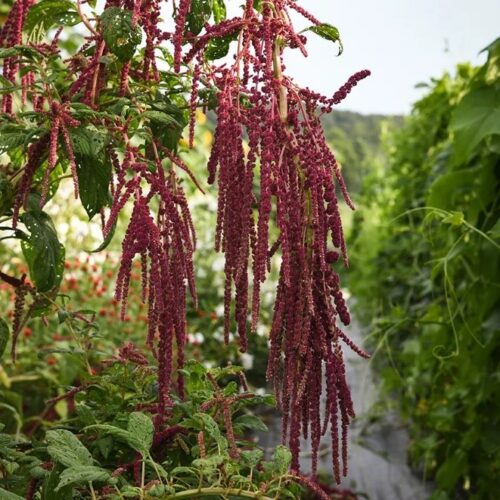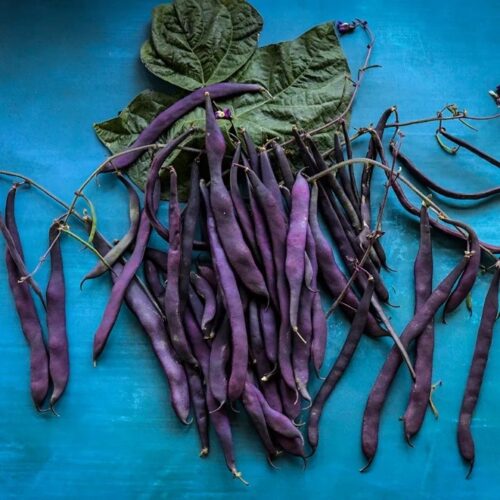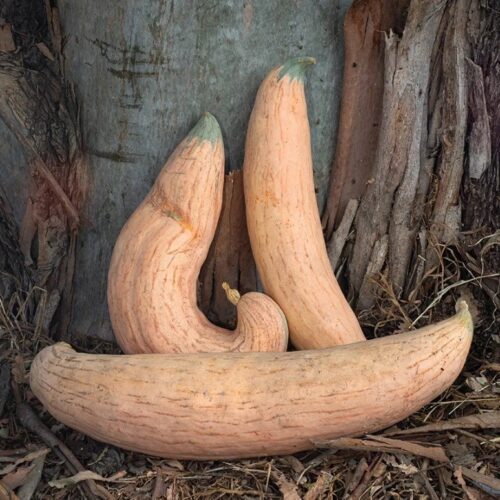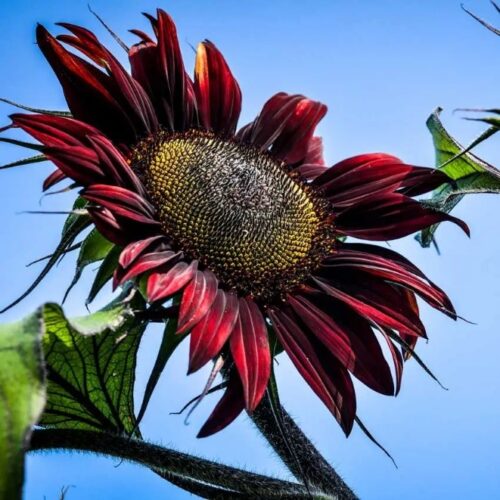The Summer Garden
The native plants from the Americas, in contrast to those of the Mediterranean and Eurasia, were exported to Europe by the Spanish explorers in the 1500s. But their history is many thousands of years older. This is quite a legacy of these garden familiars.
A short list of plants from the Americas…
- Amaranth
- Love-lies-Bleeding
- Beans
- Corn
- Japanese black sticky
- Cosmos
- Marigolds
- Peppers
- Hot – Sugar Rush Peach
- Sweet – Jimmy Nardello
- Squash
- North Georgia Candy Roaster
- Sunflower
- Chocolate Cherry
- Tomato
- Cherokee Purple
Seed that may be directly sown once danger of frost has passed:
- Amaranth
- Beans
- Corn
- Cosmos
- Marigold
- Squash
- Sunflower
Seed that ought to be started indoors:
- Peppers
- Tomatoes
The History and Cultivation of the Native Garden
Amaranth (Amaranthus spp.), the plants are cultivated as leaf vegetables, cereal plants and ornamentals. “Amaranth” derives from the Greek meaning “unfading flower,” or “one that does not wither,” giving rise to the belief that the plant imparts everlasting life (Elle Newmark. 2008. The Book of Unholy Mischief). Love-lies-bleeding (Amaranthus caudatus) has tasseled inflorescences, pinkish-red in color.
First cultivated 6,000 to 8,000 years ago in South and Central America, it was a staple food for pre-Columbian civilizations. With Cortez and the Spanish Conquistadors, the grain was almost lost: it was regarded as a forbidden crop! Rediscovered in Mexico 300 years later, the descendants of the Aztecs honored the crop and believed it imparted supernatural powers. It was first introduced into the U.S. cultivation in 1970.
Sow seed directly into the garden when danger of frost has passed. Depending on where you live, mid- to late- May. Plant in full sun, in well-drained soil.

Beans, green (Phaseolus vulgaris) are the unripe fruits of the common bean. Green beans are also known as French beans (haricot vert), string beans, and snap beans. Other species grown in the garden include the runner bean (Phaseolus coccineus) and the yardlong bean (Vigna unguiculata subsp. sesquipedalis). The green bean originated in Central and South America and has been cultivated for thousands of years.
Green beans are classified by growth habit into two major groups: bush and pole beans. Bush beans are relatively short, and are determinate, meaning they produce in a relatively short amount of time, and then stop producing.
Pole beans have a twining, climbing habit and require support, such as a pole or trellis. These beans are indeterminate, meaning that they flower and fruit over a longer period of time.
Over 130 varieties of edible pod beans are known. Pods may be green, red, purple or streaked. Pod shapes range from thin and circular (fillet type) to wide and flat (Romano type).
Varietal Spotlight:
Anellino di Trento Bush Bean. An Italian heirloom, and one of the rarest. The heirloom come from Trentino Alto Adige. It is productive and tolerates low temperatures better than other beans. “Anellino” means “small ring”, since these beans curve into a ring, with pods with purple splotches. It is also referred to as the “Shrimp Bean”.
It is a bush bean growing 18-20” tall. Sow after threat of frost has past in spring. Grow in full sun in well drained soil. We tried this variety as a fall crop, sown 60 days before the first average frost date. It produced prolifically, even in the dry fall we experience this past year!

Blauhilde Pole Bean. The Blauhilde variety is thought to have its origins in Germany, dating back to the 1800s. It is also classified as a French bean, a climber with purple pods. It bears indeterminately, meaning continually from mid-summer to late autumn. It is prized for its distinct beany flavor.
Pole beans are intolerant of cold, wet soils. Sow seed in late May. Grow in moist soil in full sun. Prep the soil with plenty of organic matter. They require trellising as they will grow to 6 feet in height.

Corn (Zea meas) was believed to be domesticated in Mexico and may be the worlds’ oldest agricultural crop. Waxy maize is characterized by its sticky texture when cooked due to the presence of amylopectin. The exact history of waxy maize is unknown. In 1908, the Rev. J.M.W. Farnham, a missionary in Shanghai, sent seeds to the U.S. Office of Foreign Seed and Plant Introduction. Characterization of these plants were first made in 1909 by Guy N. Collins, a botanist, and published in a USDA bulletin.
Cultivar Spotlight:
Japanese black sticky corn. Japanese black sticky corn is grown throughout Asia. The origin and history of sticky corn are steeped in mystery. The Japanese strain was brought from China in around 1800. It was thought that the Portuguese traders introduced sticky corn in around 1520, but some argue that sticky corn has been in China as early as the 1300s. Some researchers believe that an expedition to Peru brought sticky corn to China in the early 1400s.

Cosmos (Cosmos spp). Cosmos is a native plant indigenous to the southwestern U.S. and Mexico. The name is derived from Greek meaning “harmony” or “ordered universe”. As early as 1838, the New York seedsman Grant Thorburn offered seed of the late Cosmos, which grew to 6 feet. Cosmos is a short-day plant, forming buds as days shorten in the fall. This limited its cultivation in northern regions. In 1930, Cosmic Sensation was introduced, a variety that took only 56 days to flower, so could be grown in northern gardens.
Cosmos is easy from seed. Tovah Martin in Heirloom Flowers writes that “benign neglect is the key (to growing cosmos).” Sow seeds in spring after the soil has warmed. Rake lightly covering the seed no more than 1/8th inch. Thin plants to 4-6 inches. The plants bloom in late July or August until frost. They will easily reseed themselves, but the next generation will revert to pale pink. Collect seed to retain the white or magenta of the parent plant.

Marigold (Tagetes spp). Marigolds are indigenous to Mexico and Guatemala. Discovered in the early 16th century, and brought to Europe and Northern Africa. The French marigold Tagetes patula has feathery aromatic leaves and grows to 18” tall. The flowers are pale yellow. The African marigold Tagetes erecta grows to 4-5 ft tall with flowers that vary from yellow to orange. In Spain, the flowers were placed on the altar of the Virgin Mary, from which the name “Mary’s Gold” eventually was derived.
Easy to grow from seed, sow after danger of frost has passed. Germination takes place in 7-10 days when the soils have warmed in spring. Sow ¼” deep. Space 8-12” apart. Plant in full sun. Deadheading will encourage plants to continue to blossom.
Varietal Spotlight:
Marigold, Disco Mix. A blend of seed yielding blooms of yellows, reds, oranges and golds. The mix forms compact plants growing only 9” tall. Flowers in 50-60 days.

Peppers (Capsicum annuum). Peppers are native to tropical America. Found in pre-historic remains in Peru and Mexico, the plants were widely grown in Central and South America by pre-Columbian civilizations. The first pepper seeds were carried to Spain in 1493 and from there spread through Europe and Asia.
Pepper plants are perennial, but grown as annuals in areas outside their native habitat. They are not winter hardy. Pepper fruits come in a variety of shapes and sizes ranging from the small and nearly circular aji charapita to the long thin tabasco pepper and to the large, furrowed bell pepper. Hot peppers derived their pungency from capsaicin, concentrated in the white placenta of the fruit, and was first isolated in 1876.
Start seed indoors. I have found that to grow peppers successfully, use bottom heat, and keep the growing media evenly moist (I use a glass plate to keep the humidity up). The peppers are from a warm, humid region, they do best when mimicking those same conditions.
Varietal Spotlights:
Sugar Rush Peach Pepper. Derived from the species Capsicum baccatum, with origins in either Peru or Bolivia. Commonly referred to as Aji peppers, they are now cultivated throughout South America and Costa Rica. The Sugar Rush Peach pepper was originally cultivated by Chris Fowler of Welsh Dragon Chilli. The Wales-based pepper grower considers the variety to have emerged accidentally through open pollination. It has some amazing characteristics. They are sweet, but finish with spicy heat (50-100K Scovilles) are have a peach color.

Jimmy Nardello Chile Peppers. Initially grown in the southern coastal town of Ruotu in the Basilicata region of Italy. Giuseppe and Angela Nardello introduced the seed to the U.S. when they immigrated to Naugatuck, CT in 1887. They brought the seeds from Italy and their fourth son Jimmy inherited their love for the pepper. Jimmy continued to grow the peppers until his passing in 1983. He donated the seed to Seed Savers Exchange, and the peppers were named after him in his honor.
The variety is favored for its sweet, candy-like flavor, and considered to be one of the best frying peppers.
In 2005, Jimmy Nardello Chile peppers were listed on the Ark of Taste, which is a list compiled by the Slow Food organization to bring awareness to foods that may be facing extinction. The organizations mission is to identify and champion plants and seed at risk to encourage cultivation and preservation. Since appearing on the list, Jimmy Nardello Chile peppers have grown in popularity and have become a favored variety for home gardening.

Squash (Cucurbita spp). The earliest known domestication of squash species was around 8000 years ago in Mexico. The genus was unknown in Europe until the late 16th century. All squash commonly referred to as pumpkins, gourds and squashes originated in the New World and are member of the Cucurbitaceae. They are native to a range extending from the central United States south to Argentina. Most of all our domesticated squash came from just five species. The three most common are:
Cucurbita maxima
- Buttercup squash
- Candy Roaster
- Hubbard squash
- Kabocha squash
- Red Kuri
Cucurbita moschata
- Butternut squash
- Musquee de Provence
Cucurbita pepo
- Acorn
- Connecticut field pumpkin
Squashes can be broadly grouped on their basis of the time of harvest. Later maturing, odd-shaped squash with thick or warty skin are referred to as winter squash (mostly, C. maxima and C. moschata). The smaller, quick-growing squash eaten before the rinds and seed mature are called summer squash (primarily, C. pepo). Oddly, though placed in the C. pepo group, acorn and Connecticut field pumpkins are grown as winter squashes.
Varietal Spotlight:
North Georgia Candy Roaster. First cultivated and bred by the Cherokee in the 19th century. The Cherokee valued the squash for its long shelf life and planted it through present-day North Carolina, Northern Georgia and Eastern Tennessee. A Hubbard-type winter squash, it is banana-shaped, pink with a blue tip. It matures in 95 days. Sow seed ½ to 1” deep in soil after all danger of frost. It prefers temperatures between 70 and 95F. Plant in full sun, 18-36” apart in well-drained soil that’s rich in organic matter.

Sunflower (Helianthus annuus). The sunflower is a North American native plant, and was cultivated by the Native American tribes throughout pre-historic North America. There is evidence that it was cultivated in the Southwest and Mexico as early as 3000 BC. The seed was ground into flour for cakes, mush, or bread. The seed oil was used on the skin and hair.
The sunflower arrived in Europe by Spanish explorers in the 1500s, and spread through western Europe. Used initially as an ornamental, but by 1769 it was cultivated for oil. By the early 19th century, two types had been identified: oil-seed, and large whole-seed, for human consumption.
Oddly it was improved and commercialized in Russia in the late 1800s, and only returned to North America in the late 19th century to become a cultivated crop. By the late 1940s, Americans cultivated sunflowers with nearly 50% oil content.
The genus name “Helianthus” is derived from the Greek, “sun” and “anthos,” flower. An interesting characteristic of the immature flower heads is that it tracks the suns movement, termed heliotropism. The movement is circadian. Mature heads however point in a fixed direction, typically eastward. The misconception that sunflower heads track the sun was debated as early as 1597 by the English botanist John Gerard, who wrote in his Herball: “[some] have reported it to turn with the sun, the which I could never observe, although I have endeavored to find out the truth of it.”
Sunflower can germinate in soils as cool as 46 F. Tolerant of frost, mature sunflowers will tolerate temperatures as low as 25 F. Sunflower heights vary ranging from 5 to 7 feet tall. Dwarf varieties typically grow 3 to 4 feet tall. Plant seed 1 ½ ft apart and 1” deep in soil.
A large number of cultivars are available for ornamental planting varying in size and floral color. Sunflowers attract pollinators and beneficial insects. They are also very attractive to birds who enjoy eating the seed. Some new cultivars form heads that droop downward, which reduces seed loss from birds.
Traditionally, some Native Americans planted sunflowers at the edge of their gardens planted with the three sisters (corn, squash and beans) constituting a “fourth sister”.
Varietal Spotlight:
Sunflower, Chocolate Cherry. Petals are deep obsidian to rich chocolate and black cherry. A multi-branching variety, it grows 6-7 ft in height. Matures in 65-75 days. Plant where it will get full sun (of course)! Sow seed after danger of frost. Ideal growing temperature ranges from 60-75 F.

Tomato (Solanum lycopersicum). The tomato was known to the Aztecs and cultivated by them as early as 700 AD. It is believed that Cortez brought seeds to Europe in 1519. One of the earliest references of the tomato in Europe was made by the Italian herbalist, Pietro Andrae Matthioli, who classified the pomo d’oro (“golden apple”) as a nightshade and mandrake, a category of food believed to be an aphrodisiac. The Old Testament refers to the mandrake as the “love apple.” In Genesis it is used as a love potion. However, the mandrake, an Old-World plant, is distinct from the tomato, known only then in the New World plant (and therefore unknown to the authors of the Old Testament).
In Andrew F. Smiths The Tomato in America: Early History, Culture and Cookery, he quotes from John Gerards 1597 Herball: “…the whole plant to be of ranke and stinking savour…the fruit corrupt…” While the leaves and stalk of the tomato plant are toxic (the plant belongs to the Solanaceae), the fruit is not. However, it was Gerards opinion, though however inaccurate, prevailed in Britain and in the North American colonies for over 200 years. The tomato was only grown as an ornamental.
The first reference of tomato in the North American Colonies was published by William Salmons Botanologia in 1710 which places the tomato in the Carolinas. It wasn’t until 1822, that recipes to prepare tomatoes first appeared. However, in the 1830s the Green Tomato Worm defoliated tomato plants and were a new source of concern.
According to The Illustrated Annual Register of Rural Affairs and Cultivator Almanac published in 1867, the mere brush with the hornworm could result in death! Even Ralph Waldo Emerson feared them as “an object of much terror…being regarded as poisonous and imparting a poisonous quality to the fruit…”
It wasn’t until the entomologist Benjamin Walsh argued that the worm was harmless that the attitude toward the dreaded tomato and hornworm changed.
Thomas Jefferson grew tomatoes in his vegetable garden and enjoyed eating the fruit, but it wasn’t until the 1900s that the tomato’s popularity spread across the states. Today, tomatoes are consumed around the world in countless varieties: heirlooms, beefsteaks, Romas, and cherry tomatoes to name a few.
Varietal Spotlight:
Cherokee Purple. A pre-1890 Cherokee Indian heirloom. Deep purple-pink in color, sweet flavor and large-sized fruit. Matures in 80 days. Start plants indoors in February or March. Apply bottom heat as an aid to germination. Plant out of doors after danger of frost. Be sure to acclimatize your plants before setting out. Ideally prefers temperatures between 75 to 95 F. Plant in full sun, in well drained soil, rich in organic matter.

Our summer garden is made up of warm season plants. Some long season cultivars such as the tomato and pepper ought to be given a jump start by early planting indoors. The majority though can be sown out of doors once the threat of frost has passed and the soils have warmed. This latter group includes the three sisters: corn, squash and beans, and the “fourth sister”, the sunflower.
Having a sense of where our garden plants came from help us to understand their cultural needs, which we endeavored to address in this three-part series. Next time, we will look at hw to prune plants in the winter.
~ Signing off for now, Joe

